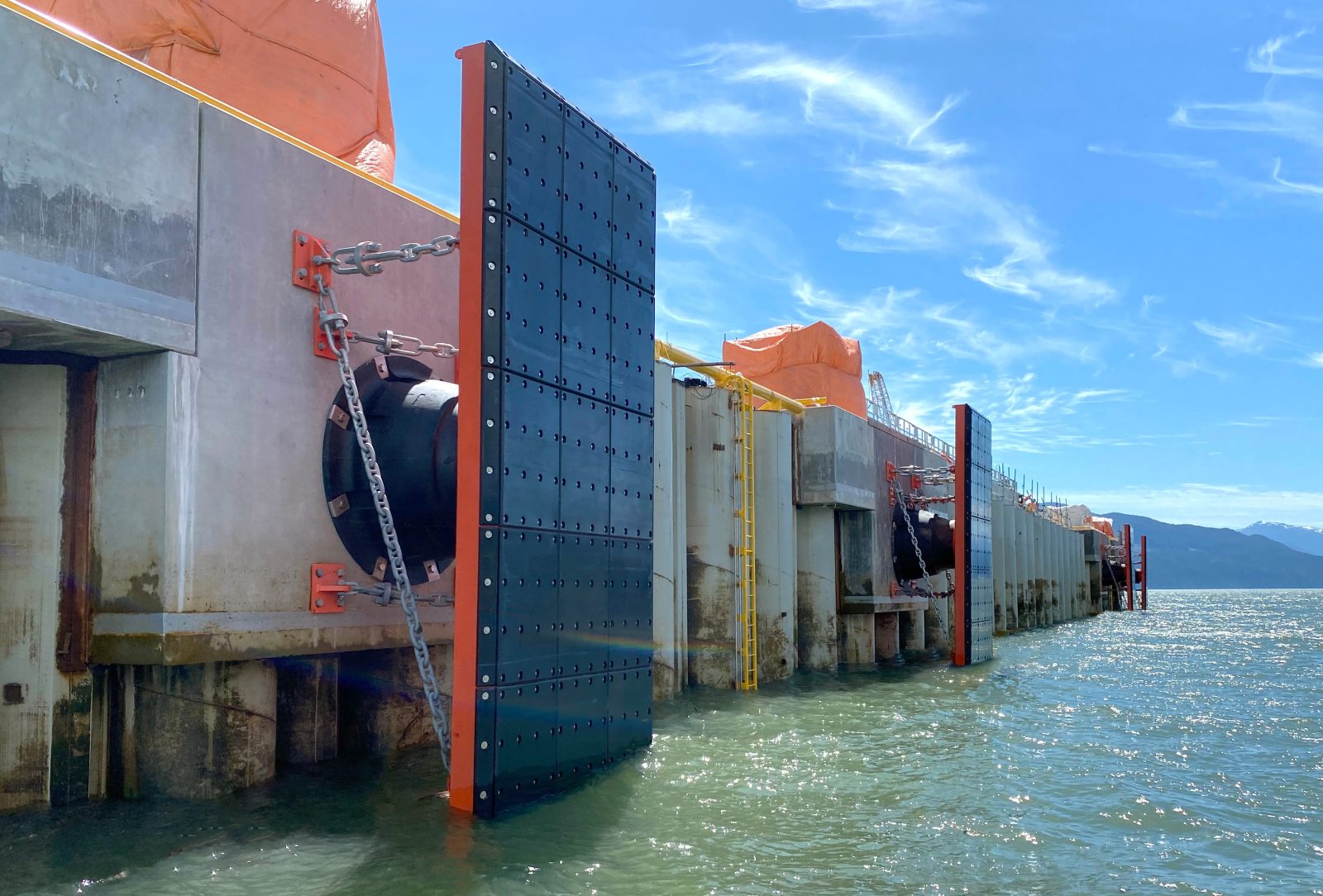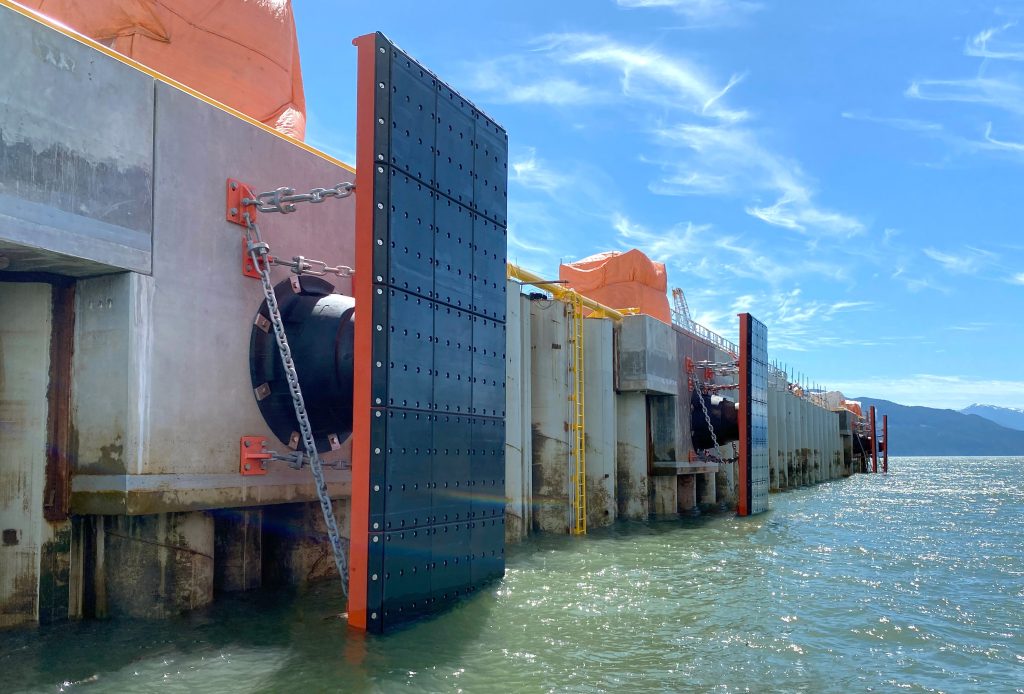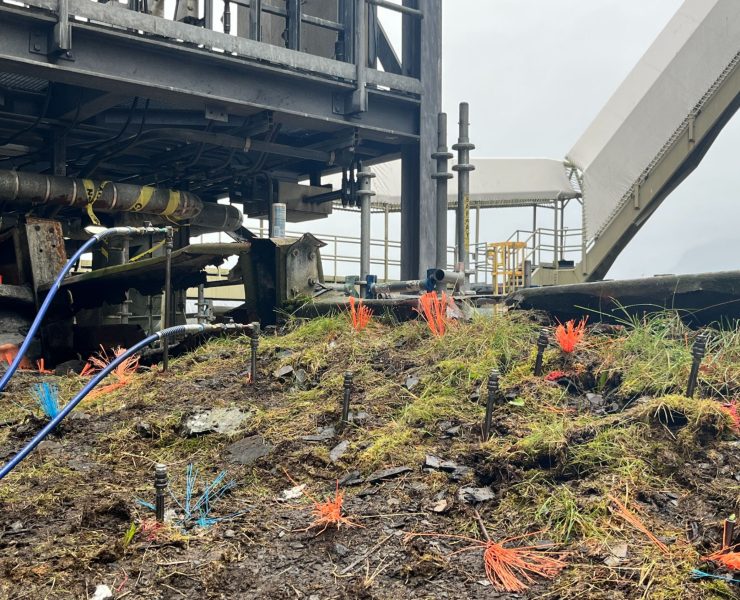Kitimat’s New LNG Export Terminal in Canada Equipped with ShibataFenderTeam Solutions


The Kitimat LNG facility represents the largest private sector investment in Canadian history. Spread over 430 hectares, this export terminal will operate numerous process plant and marine installations to export 26 million tonnes of Liquified Natural Gas (LNG). A 550-metre-long Material Offloading Facility (MOF) was developed to facilitate the receipt of building materials and support the construction of this terminal.
To ensure safe berthing at the new facility, ShibataFenderTeam designed and delivered a special customized solution comprised of different fender systems:
- 35 double Cone Fender Systems, each consisting of one Cone Fender (SPC 800, G1.5) and one Cone Fender (SPC 800, G2.5) designed for the MOF.
- Four double Cone Fender Systems (SPC 1000, G1.1) for a RoRo terminal.
- Four Cone Fender Systems (SPC 1600, G1.2 and G2.0) intended for the LNG export terminal.
All of them with exceptionally large closed box panels: 1850×7300 mm, 2300×8550 mm, and 3450×7500 mm respectively.
Unique challenges arose due to the diverse locations and operations at the new terminal. A significant obstacle encountered during the MOF development involved the combi wall, which required a customized flange integrating the system chain’s attachments. This approach eliminated the need for welding additional components to the combi wall, simplifying and accelerating the installation.
Another significant challenge was the Ro-Ro terminal’s design, particularly the hull pressure (HP) requirement for smaller vessels. This posed a unique problem as these vessels do not make full contact with the fender panel, affecting the HP calculations. Complicating things further, SPC fenders are buckling type fenders, meaning that the first peak of reaction force occurs early in the deflection process. The provided solution–wider panels–ensures sufficient contact area to meet the HP requirements.
Furthermore, the design of the fenders for the LNG terminal required accommodation of several different load cases and berthing angles, known during the design stage. This complexity led to LNG fenders with two distinct setups G1.2 and G2.0, the latter being for the first fender, which absorbs higher berthing energy and consequently requires a harder fender.
Last but not least, logistical issues surfaced from the oversized panels that needed to be shipped to Prince Rupert, British Columbia, and then transported by truck another 200 km before reaching final destination.
We at ShibataFenderTeam Group are proud to have accomplished this challenging project developing a customized solution; yet another great example of the SFT holistic approach that we have advocated for seven year now and that finally is being endorsed by the new PIANC MarCom WG211 report Guidelines for the Design, Manufacturing and testing of Fender Systems 2024.
This project not only showcases our commitment to innovative engineering solutions but also aligns with global efforts to transition towards cleaner energy sources, positioning LNG as a viable alternative to coal.

















